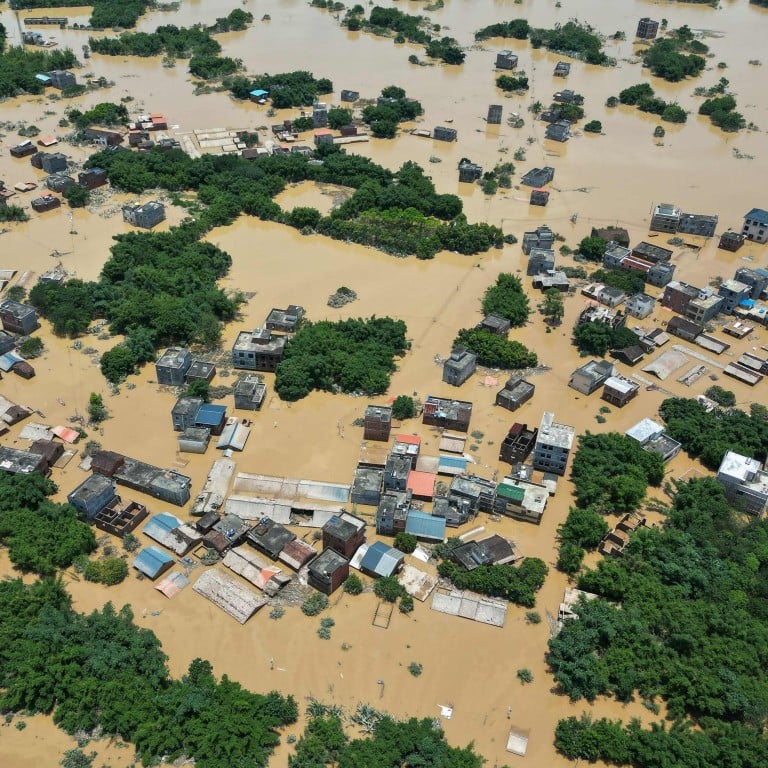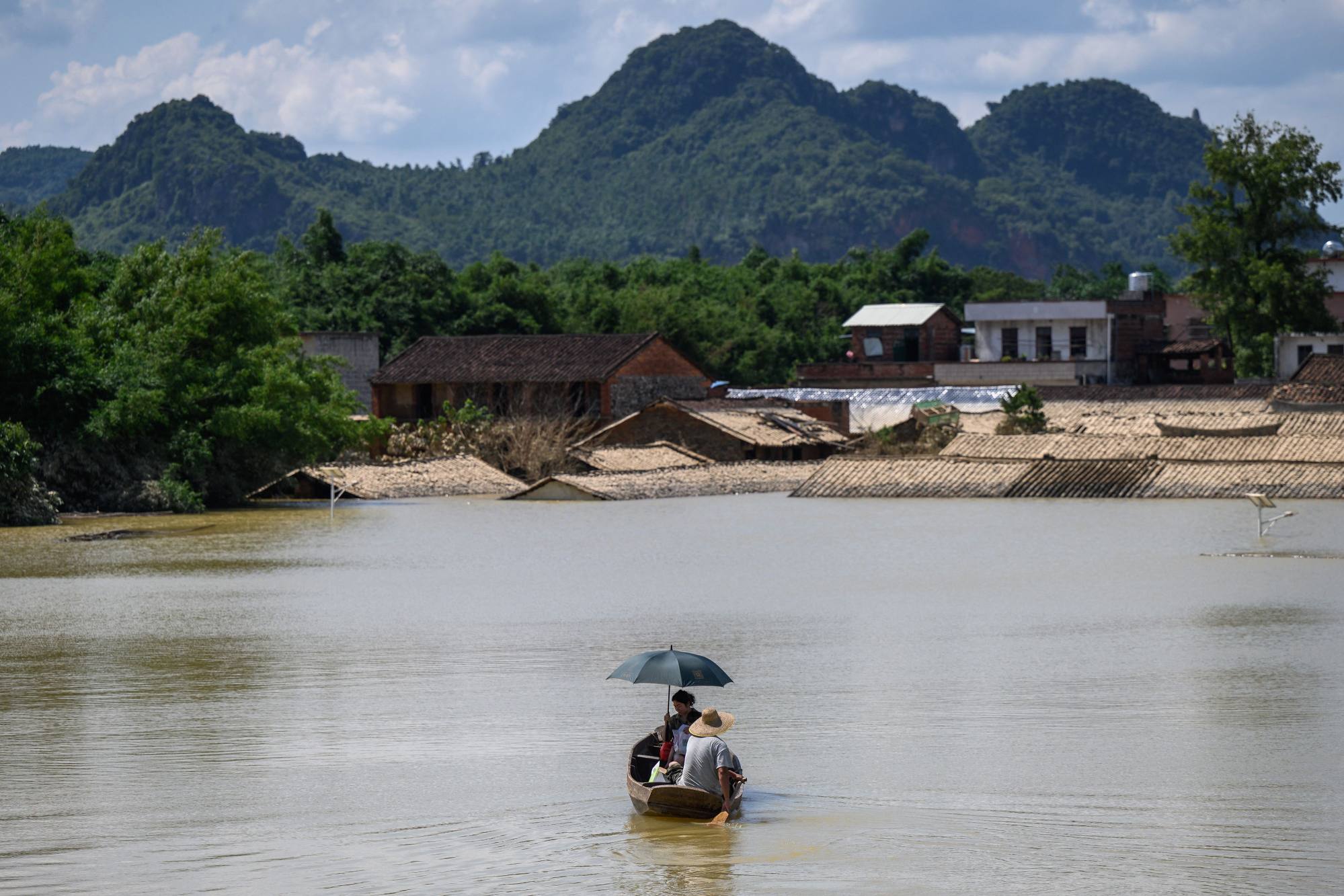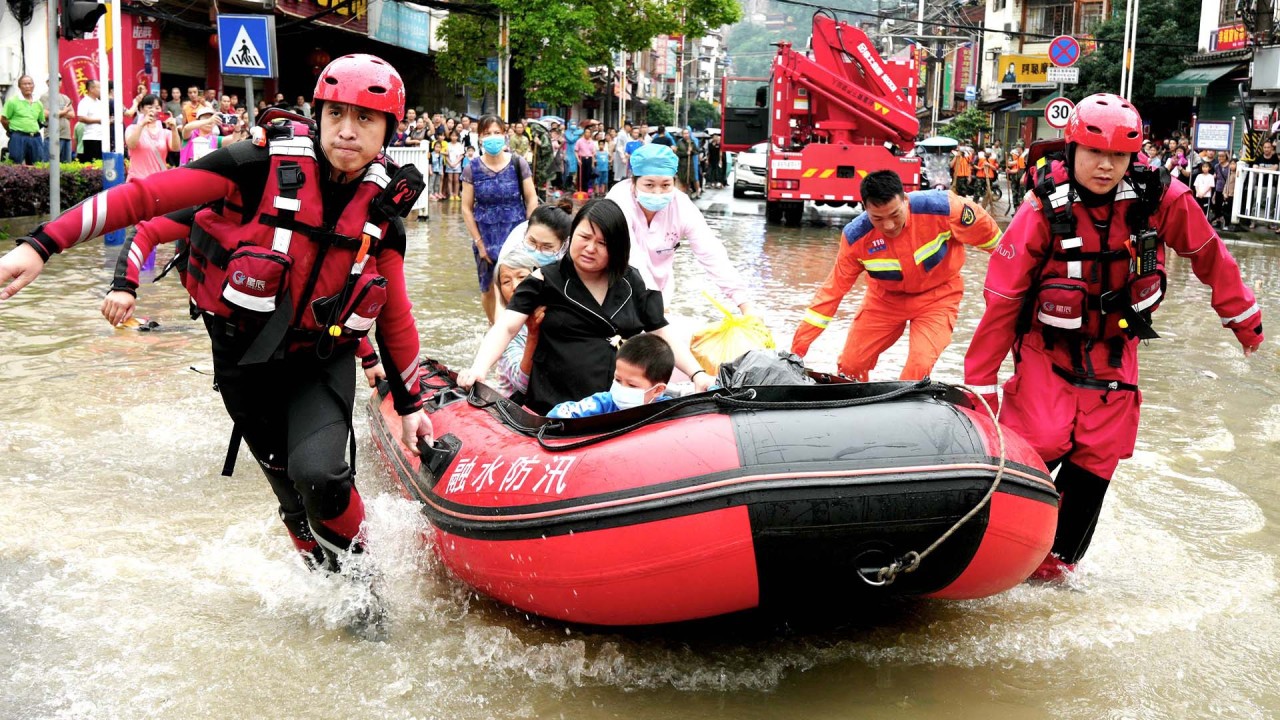
Quarter of world’s population at risk from once-in-a-century floods
- Around 1.8 billion people face a “significant” risk, including hundreds of millions in the world’s two most populous countries – India and China
- Researchers found that trillions of US dollars of economic activity, accounting for 12 per cent of global GDP in 2020, is threatened by the floods
Around a quarter of the world’s population face a “significant” risk from once-in-a-century floods, a global study has found.
The world’s two largest countries by population combined account for more than one-third of global exposure to a significant risk, which the researchers defined as floods with a depth of 15cm (6 inches) or more.
China leads the world in terms of the economic risk from such floods, which have a 1 per cent chance of happening in any given year, with economic activity worth US$3.3 trillion at risk.
It is followed by the United States at US$1.1 trillion and Japan at US$700 million, according to the study by researchers with the World Bank and Deltares, a Dutch research institute.
In China, the risk is greater along the coast and the Yellow River valley – an area sometimes described as “China’s sorrow” because of its long history of catastrophic floods – according to the article published in the peer-reviewed journal Nature Communications on Tuesday.
At present parts of southern China are experiencing record levels of rainfall, with 240,000 people being evacuated in the region of Guangxi and a total of 3.75 million affected in some way.
Mass evacuations as record rain, floods strike southern China
The downpours and subsequent floods have engulfed homes, crops and roads, causing direct economic losses of more than 12.48 billion yuan (US$1.86 billion).
Globally, the researchers called for action to strengthen disaster prevention and recovery capacity in the hotspots where poverty and flood exposure coincide.

They said at least 170 million people exposed to flood risks lived in extreme poverty on less than US$1.90 per day, 88 per cent of whom lived in Sub-Saharan Africa and South Asia.
“Under current conditions, more people than previously known are exposed to flood risks. Climate change and risky urbanisation patterns are expected to further aggravate these risks in coming years,” the study said.
“Yet, when prioritising flood protection investments, focusing on the monetary exposure of assets and economic activity is bound to bias attention toward high-income countries and economic hubs.
“Low-income countries are disproportionately exposed to flood risks, while being more vulnerable to disastrous long-term impacts.”
Of the US$9.8 trillion of economic activity in flood-risk areas, about 12 per cent of global GDP in 2020, 84 per cent is located in wealthier countries, according to the study.
High-income countries account for 37 per cent of exposed economic activity, but only 11 per cent of the world’s flood-exposed population, while low- and lower-middle-income countries account for 52 per cent of exposed people, but only 16 per cent of exposed economic activity.
The researchers said “flood risk exposure does not account for existing flood protection measures”, which “tend to be better developed in high-income countries, meaning that the fraction of exposed economic activity lost during a flood tends to be higher in low-income countries”.
China has a carbon storage tool from decades of tree-planting frenzy
“While a large share of the Dutch population lives in flood risk areas, large-scale investments in flood protection infrastructure have enabled them to mitigate risks,” the researchers said.
“Similarly, flood-exposed populations in Canada or Japan are more likely to have access to rapid government support systems in post-disaster situations compared to people in Malawi or Bangladesh.”



